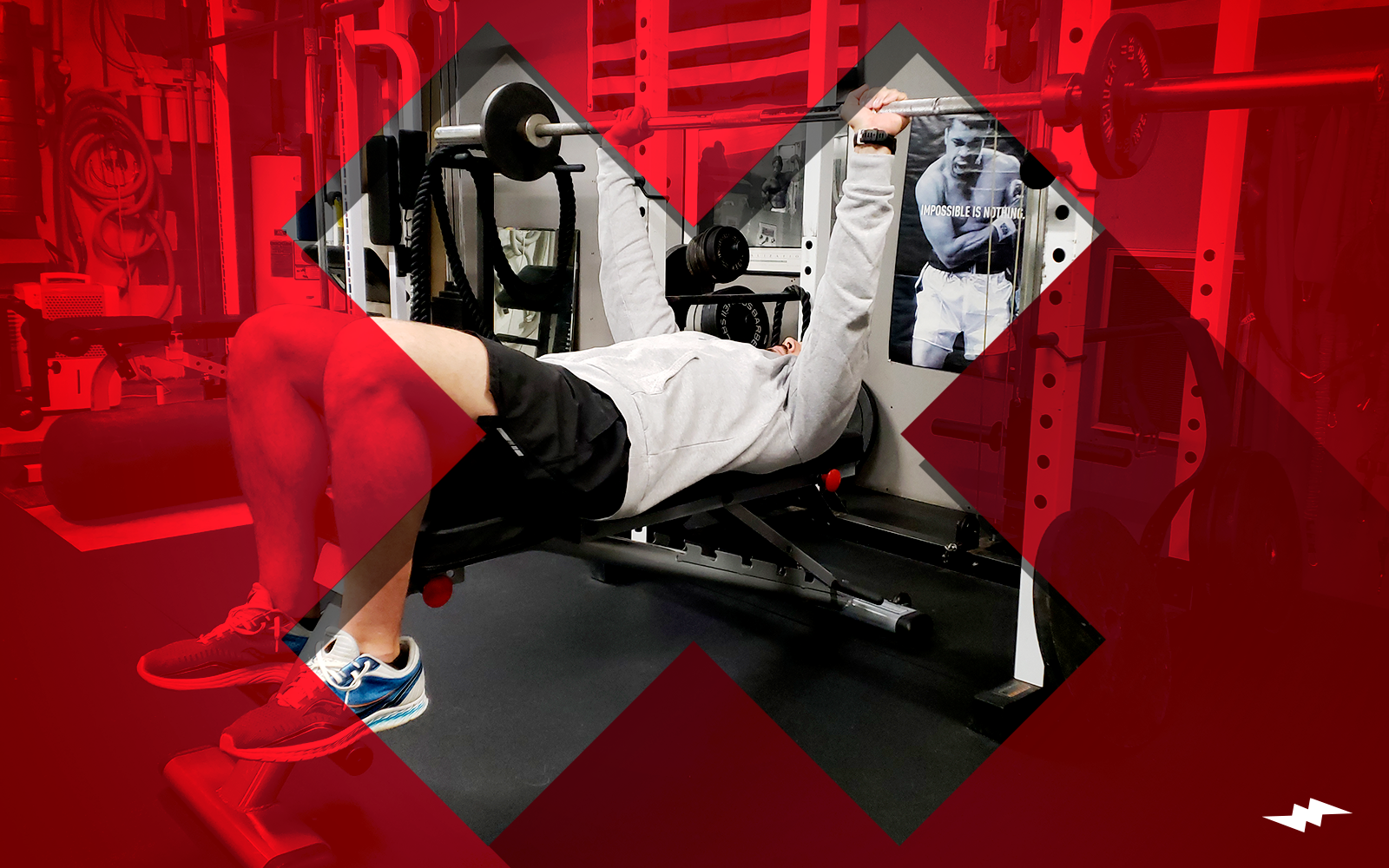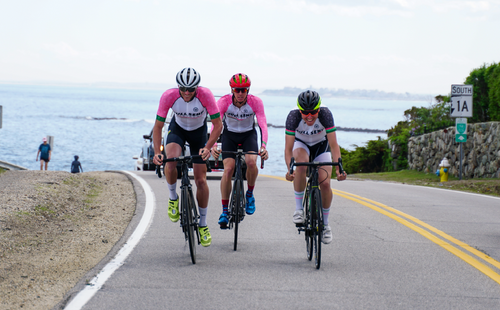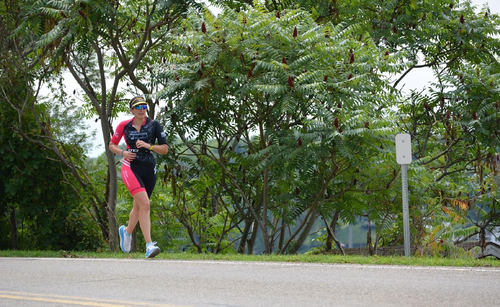5 Common Strength Training Mistakes That Triathletes Make

Strength training is oftentimes pushed to the back of our training programmes as triathletes. At best it is an add-on to the week’s training that we attempt to fit in if we have time; at worst it gets neglected altogether due to the shear volume of endurance training that we do. However, strength training is seen by some as the ‘fourth discipline’ of triathlon and, as Strength and Conditioning Journal puts it, can aid triathletes in in reaching peak conditioning levels and an optimum level of performance.
Strength training is integral to a triathlete’s conditioning program, and it is important that it is done in a manner that will yield the greatest results. Common strength training mistakes that triathletes make are: doing too many high rep low weight exercises, not lifting heavy, not including power exercises, including too many functional strength exercises and not increasing weights over time.
Too Many High Rep Low Weight Exercises
High reps at low weights; the feeling that you get is quite addictive. Pushing yourself to absolute failure with low weights creates that burn throughout your muscles which ‘proves’ you are training hard. Is this what you do in your gym sessions?
High rep low weight exercises are useful in building muscle endurance, but as triathletes we already have a glut of endurance training in our programs, so these exercises burn a lot of time and energy for very little gain.
Not Lifting Heavy

The whole idea of strength training is to build strength, and this can be done most effectively by moving heavy weights. A study by Nathaniel Jenkins from Oklahoma State University shows that while you can induce hypertrophy (bigger muscle mass) from low-load training programs, increased strength comes from high-load programs.
As triathletes, we do not want extra muscle mass unless it is creating extra strength. In order to do this the common consensus is we want to be doing sets of 1-5 reps with heavy weights. Ensure that you are using proper form and giving yourself enough rest between sets to avoid injury.
Not Including Power Exercises
Better strength will enable you to move heavier objects; or more importantly for triathletes enable us to push heavier gears on the bike. Power, on the other hand, is the ability to engage that strength quickly. Increased running power leads to better running efficiency, and efficiency is exactly what we need as triathletes.
Including explosive exercises such as jump squats or high box jumps could be just the addition you need in your training in order to be able to kick hard through the final mile of your run.
Including Too Many Functional Strength Exercises

Functional strength exercises are those that are characterized by placing you in an unbalanced situation in order to place emphasis on the supporting muscles within a muscle group or joint. Balance disks and Swiss balls are popular additions to gyms nowadays but, while they are helpful for rehab exercises, they do little to increase total strength.
Unless you are recovering from an injury then functional strength exercises should not be part of your strength building routine because they limit the amount of weight that you can use. This is the exact opposite of what we are looking for in building strength.
Not Increasing Weights Over Time
The concept of progressive overload is that the body will adapt to the stresses that it is placed under. If those stresses are not increased over time then strength gains will be diminished.
By changing your strength routine, or adding weight to existing exercises, you can avoid plateauing. As a guide, you should be mixing things up after 4 weeks of training or when you no longer find it difficult to reach your target number of reps and sets on the weight being used. Be careful not to increase weights dramatically; an increase of around 2-3% each week is advised and you should take a break or dial it back if you feel any discomfort or pain.
Final Thoughts
The core of our training will always revolve around the three main disciplines of the swim, bike and run. However, as triathletes we ask a lot of our bodies over the course of a season, and strength exercises are a great way to protect ourselves against injuries. In addition, strength training can help in building the power we need to climb hills on the bike or kick on hard in the final part of the run.
If done properly then strength training can be a powerful tool, so take a look at your current program to see if there are changes that you could be making in order to become the best triathlete that you can be.
Written for Innerforce by Stewart Spiessens
Photos: @coach_thome

Strength training is oftentimes pushed to the back of our training programmes as triathletes. At best it is an add-on to the week’s training that we attempt to fit in if we have time; at worst it gets neglected altogether due to the shear volume of endurance training that we do. However, strength training is seen by some as the ‘fourth discipline’ of triathlon and, as Strength and Conditioning Journal puts it, can aid triathletes in in reaching peak conditioning levels and an optimum level of performance.
Strength training is integral to a triathlete’s conditioning program, and it is important that it is done in a manner that will yield the greatest results. Common strength training mistakes that triathletes make are: doing too many high rep low weight exercises, not lifting heavy, not including power exercises, including too many functional strength exercises and not increasing weights over time.
Too Many High Rep Low Weight Exercises
High reps at low weights; the feeling that you get is quite addictive. Pushing yourself to absolute failure with low weights creates that burn throughout your muscles which ‘proves’ you are training hard. Is this what you do in your gym sessions?
High rep low weight exercises are useful in building muscle endurance, but as triathletes we already have a glut of endurance training in our programs, so these exercises burn a lot of time and energy for very little gain.
Not Lifting Heavy

The whole idea of strength training is to build strength, and this can be done most effectively by moving heavy weights. A study by Nathaniel Jenkins from Oklahoma State University shows that while you can induce hypertrophy (bigger muscle mass) from low-load training programs, increased strength comes from high-load programs.
As triathletes, we do not want extra muscle mass unless it is creating extra strength. In order to do this the common consensus is we want to be doing sets of 1-5 reps with heavy weights. Ensure that you are using proper form and giving yourself enough rest between sets to avoid injury.
Not Including Power Exercises
Better strength will enable you to move heavier objects; or more importantly for triathletes enable us to push heavier gears on the bike. Power, on the other hand, is the ability to engage that strength quickly. Increased running power leads to better running efficiency, and efficiency is exactly what we need as triathletes.
Including explosive exercises such as jump squats or high box jumps could be just the addition you need in your training in order to be able to kick hard through the final mile of your run.
Including Too Many Functional Strength Exercises

Functional strength exercises are those that are characterized by placing you in an unbalanced situation in order to place emphasis on the supporting muscles within a muscle group or joint. Balance disks and Swiss balls are popular additions to gyms nowadays but, while they are helpful for rehab exercises, they do little to increase total strength.
Unless you are recovering from an injury then functional strength exercises should not be part of your strength building routine because they limit the amount of weight that you can use. This is the exact opposite of what we are looking for in building strength.
Not Increasing Weights Over Time
The concept of progressive overload is that the body will adapt to the stresses that it is placed under. If those stresses are not increased over time then strength gains will be diminished.
By changing your strength routine, or adding weight to existing exercises, you can avoid plateauing. As a guide, you should be mixing things up after 4 weeks of training or when you no longer find it difficult to reach your target number of reps and sets on the weight being used. Be careful not to increase weights dramatically; an increase of around 2-3% each week is advised and you should take a break or dial it back if you feel any discomfort or pain.
Final Thoughts
The core of our training will always revolve around the three main disciplines of the swim, bike and run. However, as triathletes we ask a lot of our bodies over the course of a season, and strength exercises are a great way to protect ourselves against injuries. In addition, strength training can help in building the power we need to climb hills on the bike or kick on hard in the final part of the run.
If done properly then strength training can be a powerful tool, so take a look at your current program to see if there are changes that you could be making in order to become the best triathlete that you can be.
Written for Innerforce by Stewart Spiessens
Photos: @coach_thome
SEE WHAT CUSTOM APPAREL LOOKS LIKE

GEAR UP
MORE FROM THE BLOG

This is our reason to exist, our purpose
If the year 2020 teaches us anything, it is that our world needs us to do better. We need to...

Our journey towards becoming Climate Neutral
About us Innerforce was born with one vision: to connect with passionate people who genuinely believe in sports’ power to...

Virtual Racing
The last few months have been challenging for many of us in a variety of ways. I had no idea...

Protein Recommendations in Endurance Sports
Nutrition, in my opinion, is the most important part of any endurance sport. Without proper fueling and hydration, training adaptations...



